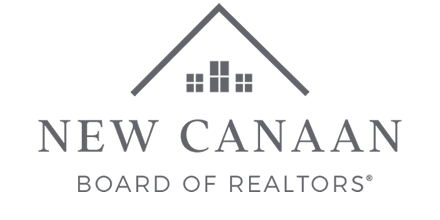Find out how once boring suburban enclaves are becoming the new centers of the Millennial universe
The media depiction of suburban America throughout the late 20th and early 21st century told primarily the same story: boring, cookie-cutter, a place to escape from, not escape to.
Times change, however, and some of those same commuter havens have been re-imagined and re-energized by an influx of young millennial homebuyers and their families who are leaving the city and looking for friendly pseudo-hometowns in which to raise their families.
Melissa Rwambuya, president of the New Canaan (CT) Board of Realtors talked to us recently about the trend, called “hipsturbia,” and what it represents for long-time residents of New Canaan and similar markets.
The New Canaan Board of Realtors conducted a small survey last year and found that several buyers were Millennials in their 30s moving from New York into Connecticut. The town has spent the past several years trying to attract more of this demographic. As this article points out, Millennials only make up just over 6.3 percent of the town, despite it being the largest demographic cohort in the nation.
Pew Research Center defines a Millennial as anyone born between 1981 and 1996. To give you a sense of context about the town, just over 20,000 people live there, according to 2018 census data.
What is hipsturbia?
Rwambuya: It’s Millennials becoming parents and moving out of the cities and into the suburbs. They are looking for affordability along with shopping, entertainment, jobs and walkability that they are used to from the city.
A town like New Canaan offers a lot of what they’re looking.
How did you become aware of the trend?
Rwambuya: Through the New Canaan Board of Realtors, we did an extensive study of people moving to our community and why. More and more we saw that the things people were looking for, they were finding here: walkability, good schools, a strong sense of community.
They found more for their money, 30 restaurants, tons of shops, a million different exercise choices. We were drawing people especially from the city out to New Canaan.
Can you talk more about jobs? I think the perception is that there would be less choice in an area like yours.
Rwambuya: I definitely believe that almost all of my clients have some work flexibility with home offices — his and hers — because in most families one or both of the spouses are working at least part time, if not full time, and working remotely.
We are at the end of the train line, so there is quite a sense of camaraderie when you go to the train: You get on with your coffee and you see the same people every day and sit in the same seats every day. A lot of friendships are made on the Metro North.
How do communities balance new development and commercial demand with preservation of existing spaces?
Rwambuya: It’s funny you say that because over the past few years there has been a new luxury condo with a combination of part ownership and part rental. The pushback was that we wanted to maintain the beauty of our town — quintessential Connecticut with stone walls and natural beauty, limitations on height so as not to disturb views — but we needed to be able to offer a luxury rental choice.
That is what this new complex will offer for people who want to try out a community before jumping in with both feet. Younger people are used to a level of luxury coming out of the city.
What types of renovations are being done to accommodate the tastes of this younger market?
Rwambuya: Today’s buyer in this demographic wants and expects things to be done already. They’re not into a huge renovation, generally. Sellers have to do a lot of preparation, often to bathrooms and kitchens, before they’re even able to market their home for sale.
How does this trend impact older residents? Are you seeing a shift in the market of people leaving?
Rwambuya: We have a thriving community of people who have lived here for decades and want to stay here. We offer more condos in this area than almost any other town in the area. There are options for this demographic.
We also have a community organization called Staying Put that helps make sure elderly residents have the amenities they need in order to stay here. The new complex will have choices for one-floor living and elevators, so we are seeing a number of clients who downsize but love the town and choose to stay. They want their kids to come back and visit — if they haven’t already decided to raise their families here as well, which we see a lot.
What types of infrastructure changes have you seen? For example, amenities and dining that would appeal to the younger homeowners.
Rwambuya: We have so many dining choices already. New Canaan is really a destination with sushi, Indian, Italian, upscale nouveau at all different price points. There is a street called Forrest Street that was shut down this past Spring and organizers created a 160-person outdoor table. A variety of different, local chefs participated for different courses.
Schools are already some of the best in the nation. That is really the number one factor for many families who are then surprised by all of the other things available.
There’s a mix of retailers — big stores like J. Crew and boutiques for all different ages. Jewelry and designs from local makers as well.
What about recreational facilities and green spaces?
Rwambuya: We have tons of green space in town — nature trails and nature preserves. We have in the center of town 30 plus acres called Waveny Park donated by a local family with the original mansion which hosts community events, weddings, and Board of Director meetings, plus soccer fields, baseball fields, and walking trails.
In the summer there are world-class 4th of July fireworks and on the back veranda of the mansion there’s a free concert from local bands every week.
Christy Murdock Edgar is a Realtor, freelance writer, coach and consultant with Writing Real Estate. She is also a Florida Realtors faculty member. Follow Writing Real Estate on Facebook, Twitter, Instagram and YouTube.
Article reprinted from Inman.com




